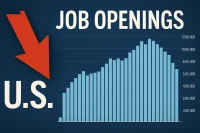The Staggering Reality of Today’s Generational Wealth Gap
The generational wealth gap between Baby Boomers and younger Americans has reached unprecedented levels. While Millennials’ collective net worth quadrupled from $3.9 trillion to nearly $16 trillion between 2019 and 2024, more than half still report living paycheck to paycheck. This paradox of “phantom wealth” – where your net worth increases on paper while financial stability remains elusive – characterizes the modern generational wealth gap.
When comparing a typical household budget from 1985 to 2022, most expenses have scaled with inflation. However, housing costs, healthcare, childcare, and retirement contributions have skyrocketed disproportionately. Even more concerning, consumer debt has ballooned from $600 billion in 1985 to a staggering $4.9 trillion by 2022.
The “Big Three” Driving Today’s Generational Wealth Gap
Housing Affordability Crisis
The median first-time homebuyer is now 38 years old – an all-time high and significantly older than previous generations who typically purchased homes in their late 20s. This delayed homeownership has profound implications for retirement security, as younger generations won’t have their mortgages paid off before retirement age.
“We’re in historically tight housing markets with few homes available, and those on the market are extremely expensive with high mortgage rates,” notes financial analyst Rachel Schneider, who co-authored The Financial Diaries.
Crushing Student Loan Burden
Unlike Baby Boomers, for whom student loans “weren’t really a thing,” Millennials and Gen Z carry massive educational debt burdens. This fundamental shift in the generational wealth gap means younger Americans start their careers with significant negative net worth.

Prohibitive Childcare Costs
Childcare expenses have increased dramatically beyond inflation rates, forcing difficult choices for young families. Many are delaying having children or making career sacrifices to manage these costs, further widening the generational wealth gap.
Income Instability: A Modern Financial Challenge
Traditional financial advice fails to address the economic volatility facing today’s workers. With the majority of Americans in hourly positions, income fluctuates significantly week-to-week, making budgeting extremely challenging.
“What we saw was a huge amount of volatility. That was our core finding,” explains Schneider. “Income is really up and down over the course of a month, which flies in the face of all the budgeting advice we usually give people.”
This inconsistency, combined with rising costs, creates what experts call a “break-even” lifestyle – one where people can cover basic expenses but have no cushion for emergencies or savings.
Need Expert Financial Guidance?
Navigate the generational wealth gap with professional advice tailored to today’s economic realities
The Middle Class Redefined
For younger generations, the definition of “middle class” has fundamentally changed. As content creator Freddie Smith notes, “The middle class is dead for millennials and Gen Zers. Or best case scenario, the goalpost has moved and it’s still obtainable. But you have to make over six figures to have that middle class life.”
This reframing of economic expectations represents a significant shift in American society and highlights the growing generational wealth gap. Learn more about changing economic classifications in our economic trend analysis.
Beyond “Avocado Toast”
Contrary to popular narratives, excessive spending isn’t the primary driver of young adults’ financial struggles. While the “avocado toast” criticism suggests frivolous spending habits, research from the Federal Reserve Bank shows that even financially conscious young professionals with advanced degrees struggle to achieve basic milestones like independent living.
“If someone got straight A’s in school, straight A’s in college, got a bachelor’s, got a master’s degree and is 29, making $80,000 and can’t even get their own apartment, let alone purchase a house or have financial stability… there’s something broken in the system,” Smith emphasizes.
Hiring Financial Talent?
Connect with professionals who understand today’s complex economic landscape and generational wealth gap challenges
Navigating the New Economic Reality
Despite these challenges, young adults can take steps to improve their financial situation while acknowledging the systemic nature of the generational wealth gap:
- Focus on upskilling through online classes and certification programs
- Create community-based solutions like co-housing and shared childcare
- Prioritize building an emergency fund, even if smaller than traditionally recommended
- Consider alternative paths to wealth building beyond traditional homeownership
Looking for career opportunities in today’s challenging economy? Search thousands of positions on WhatJobs that match your skills and location.
FAQ About the Generational Wealth Gap
What factors are primarily driving the generational wealth gap?
The generational wealth gap is fueled by three main factors: skyrocketing housing costs that make homeownership increasingly unattainable, massive student loan debt burdens that previous generations didn’t face, and dramatically higher childcare expenses. Additionally, income volatility and reduced employer benefits have created financial instability unknown to previous generations.
How has homeownership changed across generations in relation to the generational wealth gap?
The generational wealth gap is clearly visible in homeownership trends. In the 1980s, typical first-time homebuyers were in their late 20s with 30-year mortgages, meaning they owned their homes outright by retirement. Today’s median first-time buyer is 38, an all-time high. This delayed entry means many won’t pay off their mortgages before retirement, creating significant financial vulnerability.
Is overspending really causing the generational wealth gap between millennials and boomers?
No, the generational wealth gap isn’t primarily caused by discretionary spending. While individual spending choices matter, systemic factors like housing costs increasing faster than wages, substantial student loan burdens, and higher healthcare and childcare costs are the main drivers. Even financially responsible young adults with good careers struggle to achieve milestones previous generations reached with ease.
What practical steps can young adults take to overcome the generational wealth gap?
To navigate the generational wealth gap, young adults should: pursue continuing education to increase earning potential, build community-based solutions for housing and childcare costs, save consistently even if amounts are small, consider non-traditional paths to wealth building, and advocate for systemic changes that address structural economic inequalities. Seeking professional financial guidance tailored to today’s economic realities is also recommended.




